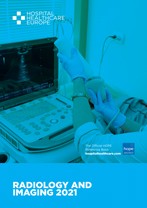From the start of the COVID-19 pandemic, imaging modalities have proved to be of enormous importance in the diagnosis and management of patients.
The importance of imaging modalities in helping to identify lung abnormalities in those infected with COVID-19 became apparent very early in the pandemic. Since that time, a good deal of information has emerged on the radiological manifestations of the virus. However, a multinational consensus statement from the Fleischer Society in April 2020 had proposed that imaging was not indicated as a screening tool among asymptomatic patients, no requirement for daily chest radiography in stable, intubated patients but that CT scans were needed for patients with functional impairment, hypoxaemia or both after recovery from the virus.
In a review of the current state of knowledge of imaging use in COVID-19, a team from the Department of Radiology, University of Wisconsin, US, produced a comprehensive role of the clinical situations in which different imaging modalities have been used to help diagnose and offer advice on the management of patients infected with COVID-19.
One of the earliest reported uses of imaging, and a major focus of the review, were chest radiographs, although as the authors noted, CT chest imaging can be normal in up to 56% of patients within two days of symptom onset, indicating that a normal CT finding does not reliably exclude the disease. Other early findings can include either unilateral or bilateral lung opacities, often with a basilar and strikingly peripheral distribution. Some of the earliest work also revealed the presence of bilateral lower zone consolidation that peaked at 10 to 12 days after symptom onset. A further valuable role for CT imaging is the ability to differentiate between patients with more severe disease. In one study of 189 patients, it was found that using a cut-off of 23% of lung involvement showed a 96% sensitivity and specificity for distinguishing critically ill patients. In addition, it has been determined from a meta-analysis of studies that the pooled sensitivity for detection of COVID-19 for CT was 94% but the specificity was only 34%. In a Cochrane review of thoracic imaging tests to diagnose COVID-19, it was found that when testing patients with known infection, chest CT was correct in 86% of cases, chest X-rays in 82% of cases, and lung ultrasound in 100% of patients. The use of artificial intelligence systems has also proved to be of value in identifying COVID-19 pneumonia with one large study in 3777 patients, finding a sensitivity of 93% and a specificity of 86%.
But imaging techniques such as CT pulmonary angiography have been successfully used to identify pulmonary embolism.
In addition, the use of MRI in patients recovering from COVID-19 have helped to identify abnormalities such as lowered ejection fraction, higher left ventricular volumes and pericardial enhancement. Moreover, abdominal CT imaging has revealed colorectal and small-bowel wall thickening, fluid-filled colon and infarction of the kidney, spleen and liver. Neuroimaging has revealed how patients with COVID-19 have various abnormalities including ischaemic and haemorrhagic stroke, encephalomyelitis and widespread white matter hyperintensities. Whether these changes are as a direct result of the virus, or a consequence of infection are unclear, although a retrospective study of brain MRI findings revealed a range of abnormalities.
The authors concluded that while the role of imaging in diagnosis and management had greatly increased during the pandemic, they did ponder the question of whether imaging could reduce hospital admissions and wondered how the role of imaging might change with the onset of respiratory illnesses during the winter months.
Citation
Kanne JP et al. COVID-19 Imaging: What we know now and what remains unknown. Radiology 2021 doi: 10.1148/radiol.2021204522





